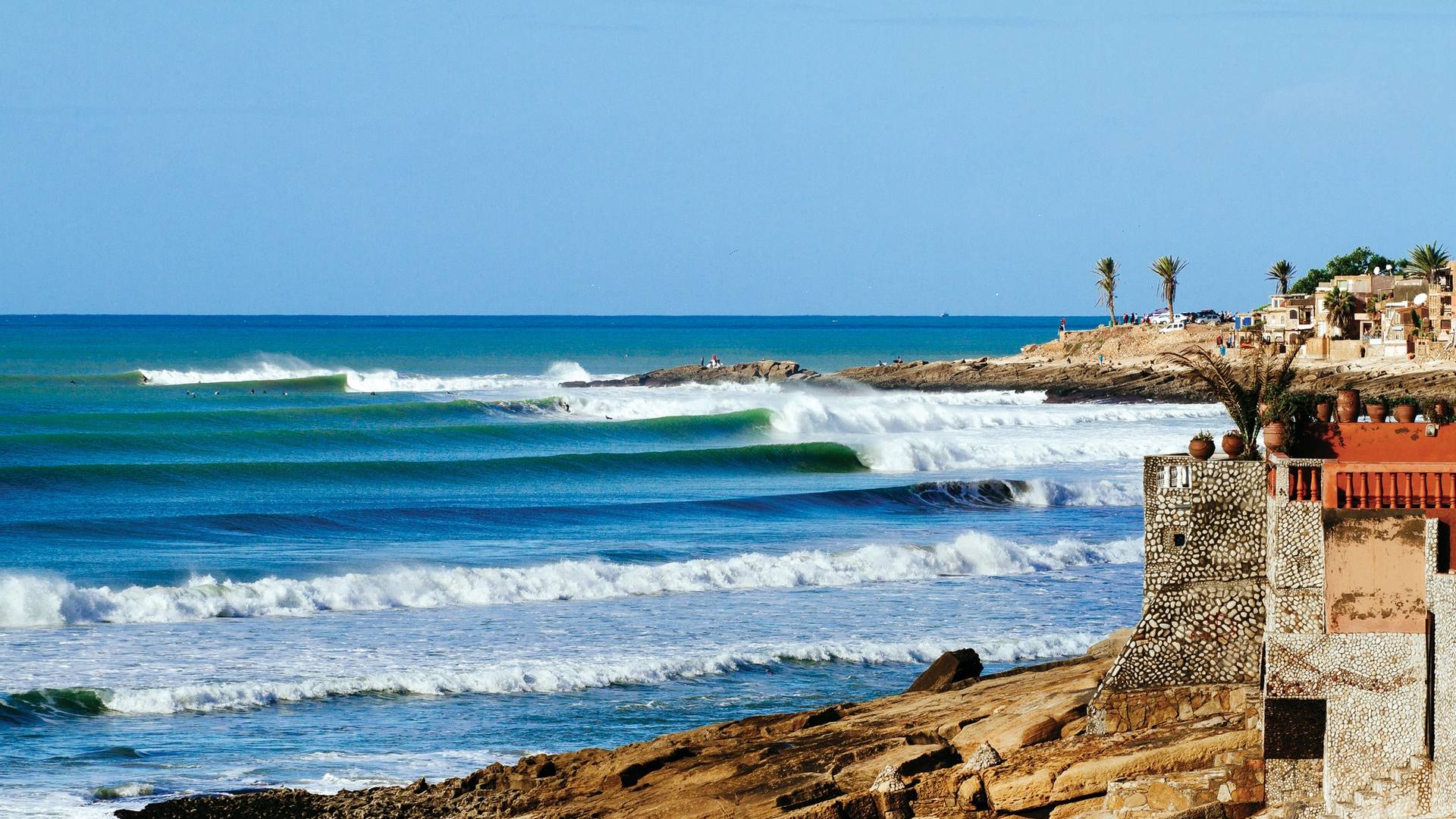Morocco
Country Data
Regions
4
Breaks
63
Coastline
1,835 KM
Cost of living
Capital
Rabat
Current Time
Security
Health
Where to surf in Morocco
Much like Mexico is for the Americans, Morocco serves as a cultural escape from the normality of the European surf trail. This ancient, exotic, kingdom is home to some fantastic righthand points that peel in green-blue symmetry, down rock and sand points, fanned by winter offshores. There’s a wealth of empty beachbreaks stretching right down into the Sahara and there are few crowds away from the main spots. Joining the long-term van trippers and burgeoning surf camp tourists in the line-up is a growing number of enthusiastic locals, who have discovered the quality of the incomparable, Moroccan surf experience.
Regions to Explore
Surfing in Morocco seems to be heavily concentrated around the two main hubs of Rabat - Casablanca in Northern Morocco and the surf-mad town of Taghazout, but the rest of the coast is equally endowed. Central Morocco includes El Jadida down to the hippy hang-out of Essaouira and on to Immesouane are any number of swell and wind exposed beachbreaks (Oualidia), plus quality right points (Sidi Bouzid, Cap Sim, Tafadna), including what is generally regarded as the best wave in the country at Safi. Down in the Southern Morocco desert beyond Tifnite are more exposed but often blown-out breaks, including Mirleft, Sidi Ifni and the legendary Boats Point, that hides itself well along this barren, stony coast.
Swell size and frequency diminishes as the Mediterranean narrows toward the Straights of Gibraltar, yet Morocco still manages to catch some rare NE windswell on both sides of the protruding promontory of Cap de Trois Fourches (La Bocana, Mina Rosita, Charrana) and even deeper west into the Alboran Sea at Playa de Targha, but by that time, you are very close to Morocco's superior Atlantic coast.
Morocco surf map
Explore the 4 regions & 63 surf breaks in Morocco.
Travel Information
General
- Current Time
- Tourists
- 12,289,000
- Population
- 36,910,560
- Tourist Info
- Tourist Info
Security
Health
Money
- Currency
- MAD
- Exchange rate
- $1 = 10 DH MAD
Cost of living
Communication
- Dialing in
- +212
- Dialing out
- 00
- Emergencies
- 177
- Language
- Arabic, French, Berber.
Electricity
- Plug Type
- ce
Visas
Most passport holders do not need a visa. Instead a free "visa waiver" is issued at customs and allows tourists to stay in Morocco for 90 days. Full visa details here
Due to global pandemic, Visas, Getting There, Getting Around or Accommodation information and pricing may have changed. Always check Government Travel Advice before travelling.
Travel Gallery
Library
Helpful surf travel videos and articles featuring Morocco.
Surf Culture
Cultural surf gallery for Morocco
History
The Stormrider Passport
Get your Stormrider Passport to explore 5000 surf spots for as little as £1.25 a month.
What’s in it for you?
- 01.
5,000 DETAILED BREAK REPORTS
Access to 5,000 detailed surf spot descriptions with ability to save spots for offline access.
- 02.
10 STORMRIDER ICONS FOR EVERY SPOT
Compare our iconic, easily recognisable symbols, highlighting 10 crucial factors for every surf break.
- 03.
UNIQUE STORMRIDER FILTERS
Personalise your search by matching your skill level, travel plans, and seasonal preferences to discover your perfect waves.
- 04.
WINDY FORECAST FOR EVERY BREAK
Get the latest surf conditions from our forecast partners at Windy, plus webcams and forecasting links.
- 05.
COMPARE REGIONAL SURF SPOT DATA
Compare regional break data and statistics to quickly discover your ideal surf destinations.
- 06.
CREATE YOUR PERSONAL WORLD SURF MAP
Easily build a map of your worldwide surf travel adventures, or create a bucket list of future destinations.

We've got more in the pipeline
Signing up not only gives you access to the World’s best surf information, it allows us to create even more amazing features in the future.






























